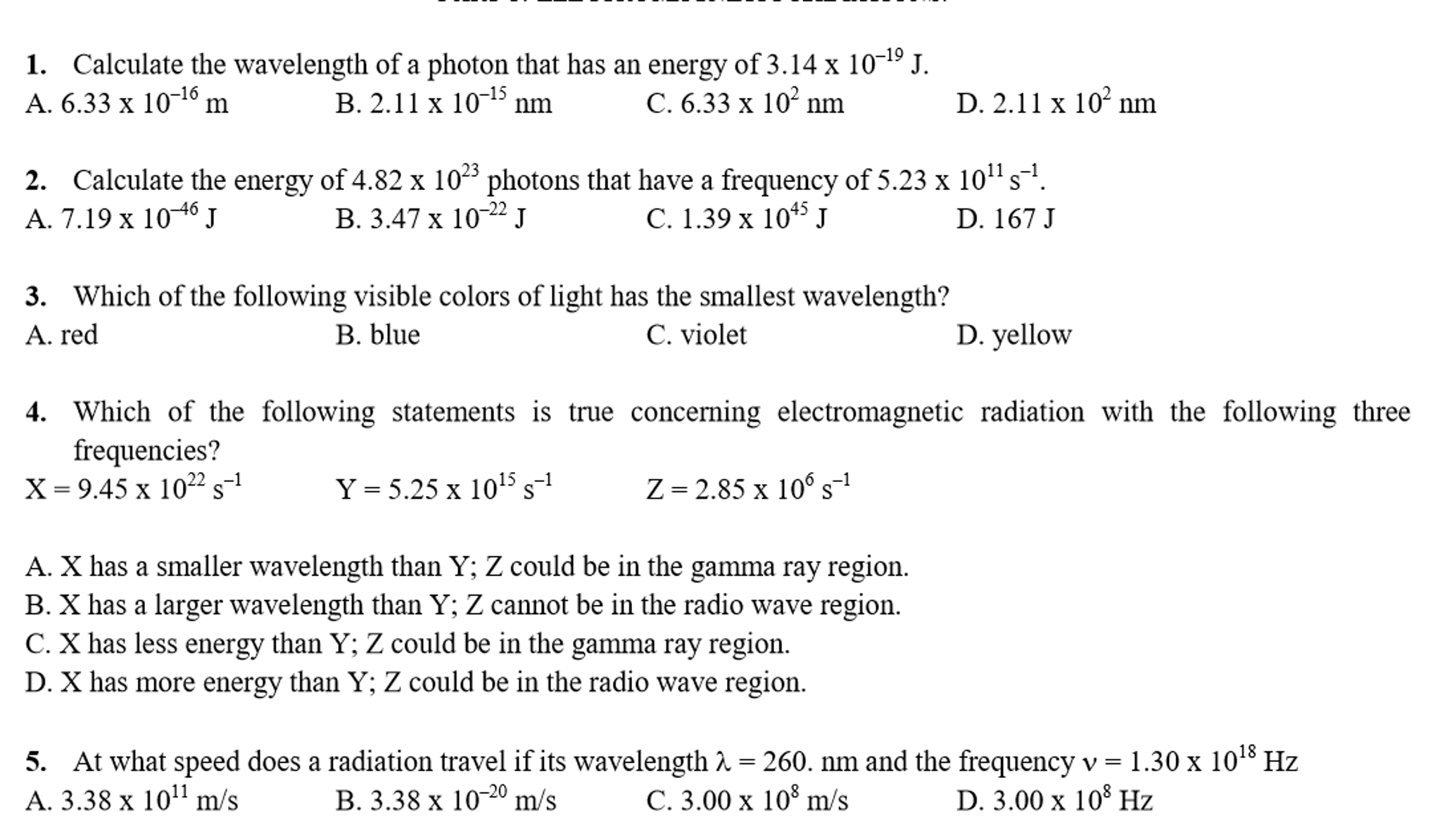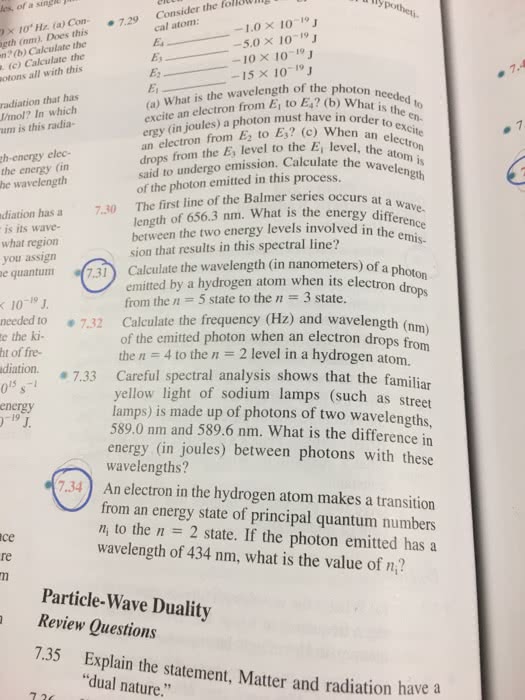CEM 141 Lecture Notes - Lecture 15: Emission Spectrum, Electromagnetic Spectrum, Electromagnetic Radiation
Document Summary
A hydrogen-hydrogen bond (in h2) requires (7. 2 10^-19 j) of energy to break, causing the molecule to fall apart (h= (6. 626 x 10^ 34 j s) and c = 3. 00 x 10^8m s^-1) . What frequency of light does this correspond to? v = e/h v = (7. 2 10^-19 j) / (6. 626 x 10^ 34 j s) = 1. 1 x 10^15 1/s = h2, uv light. What is the wavelength? c = v (3. 00 x 10^8 ms^-1) = (1. 1 x 10^15 1/s) x . =( 3. 00 x 10^8 ms^-1) / (1. 1 x 10^15 1/s) = 2. 8 x 20^-7 m. In nm? (2. 8 x 20^-7 m) (1 x 10^9 nm / 1 m) = 280 nm. Ultraviolet radiation and radiation of shorter wavelengths can damage biological molecules because they carry enough energy to break bonds within the molecules. Electromagnetic radiation can be modeled by both a wave and by particles. The energy of photons determine the color of the light.




